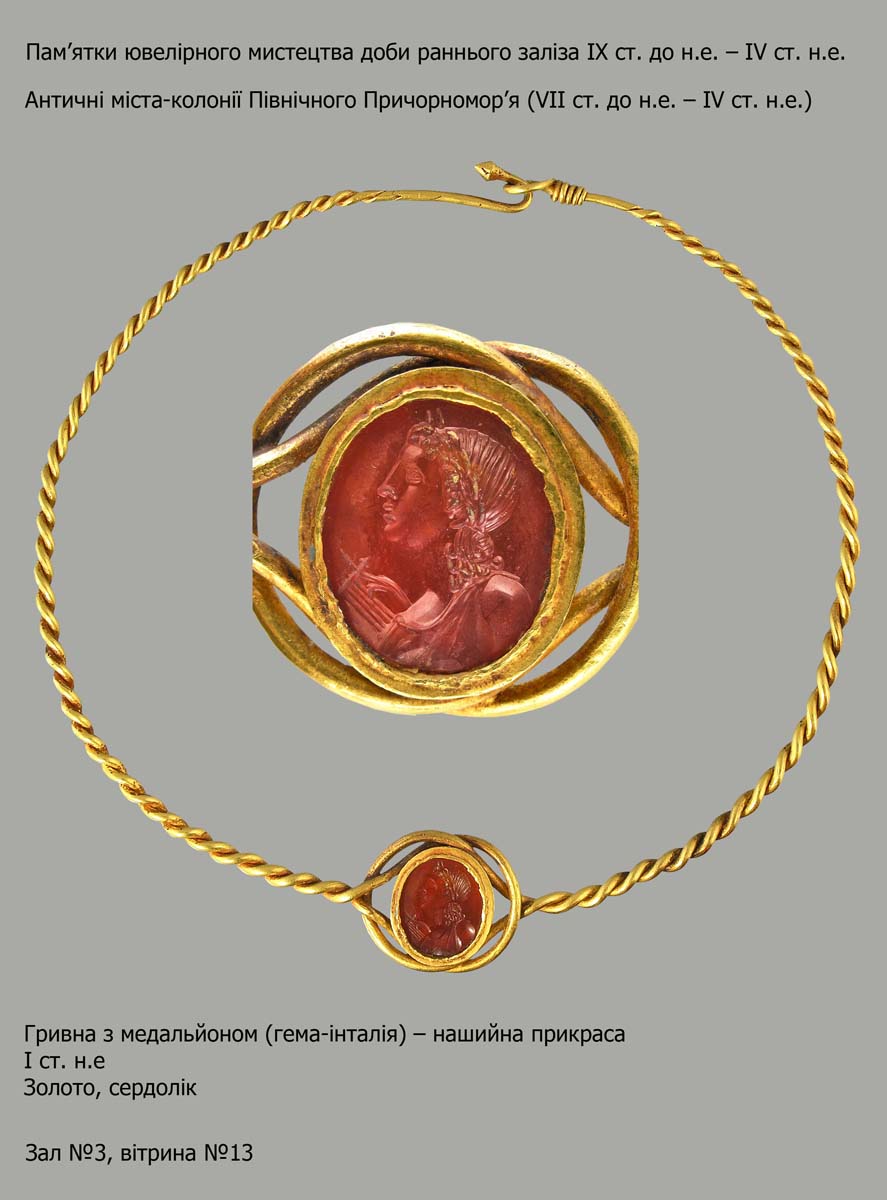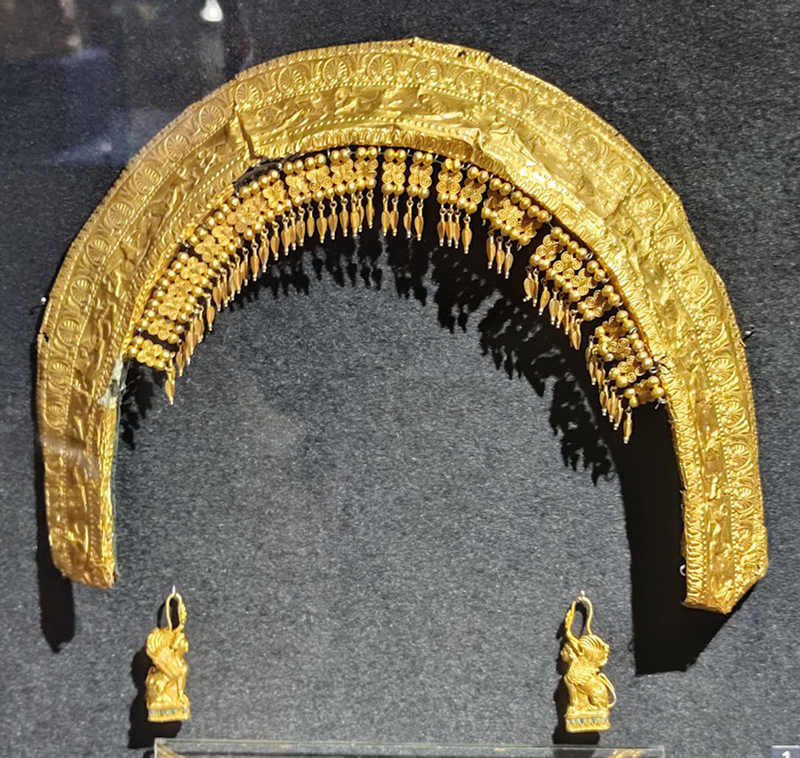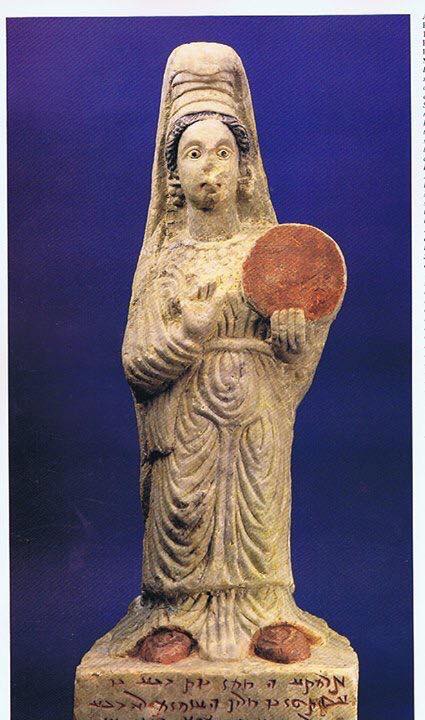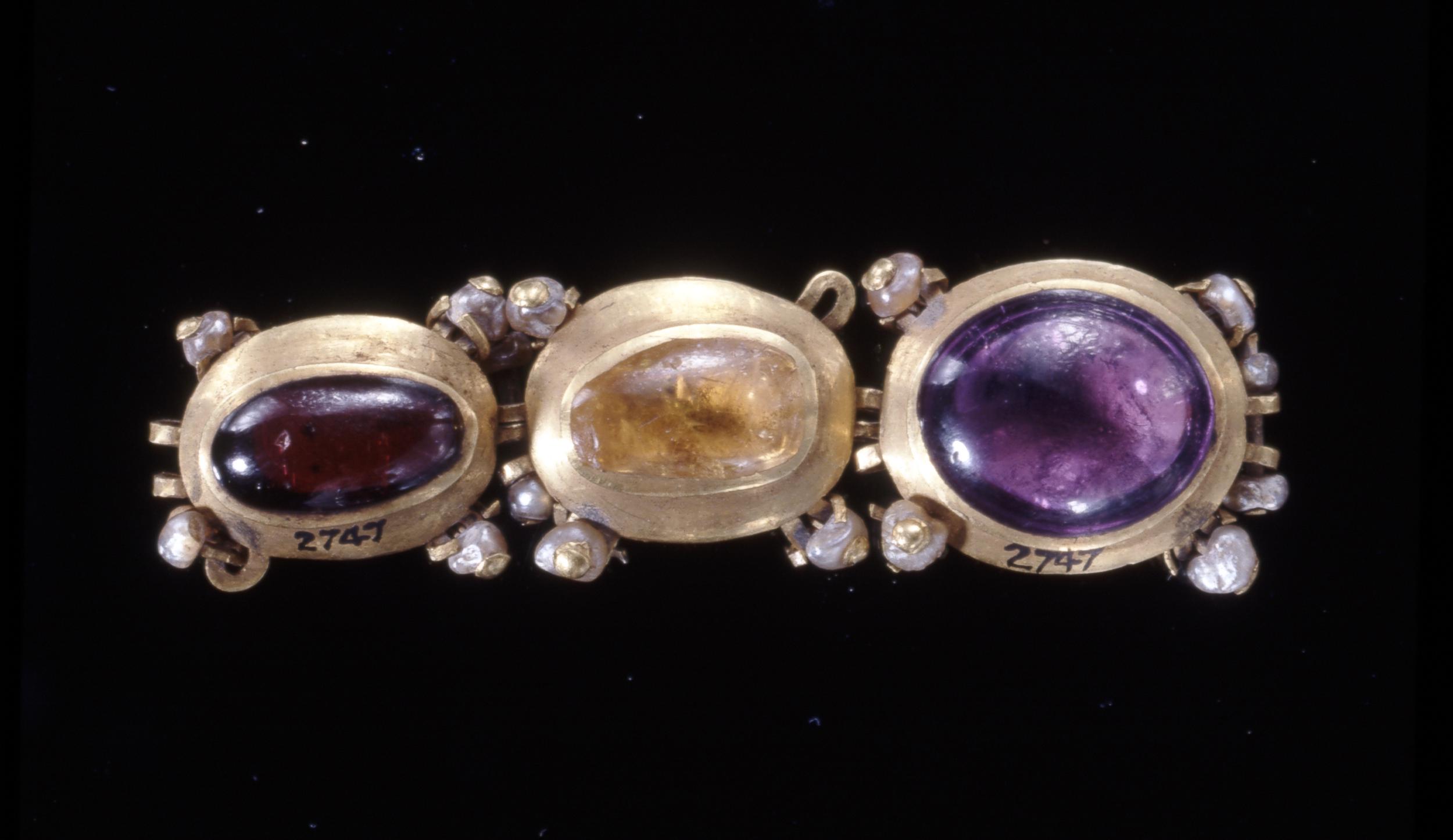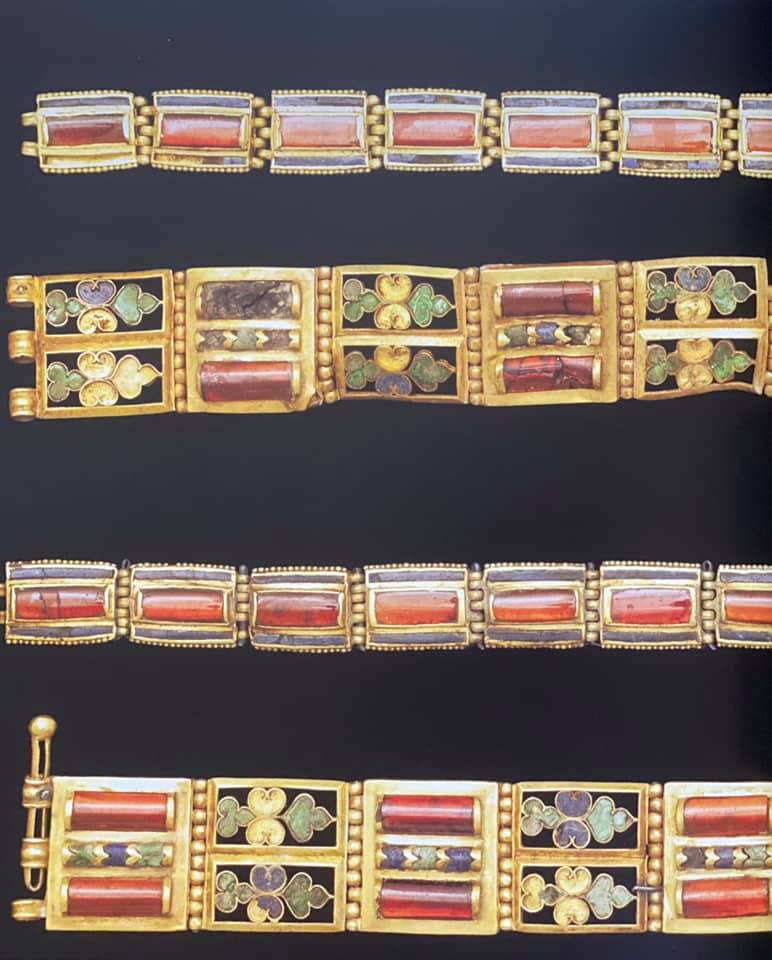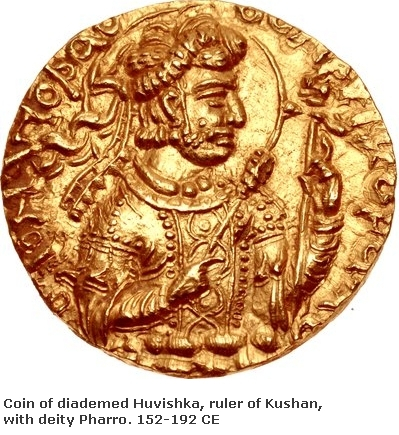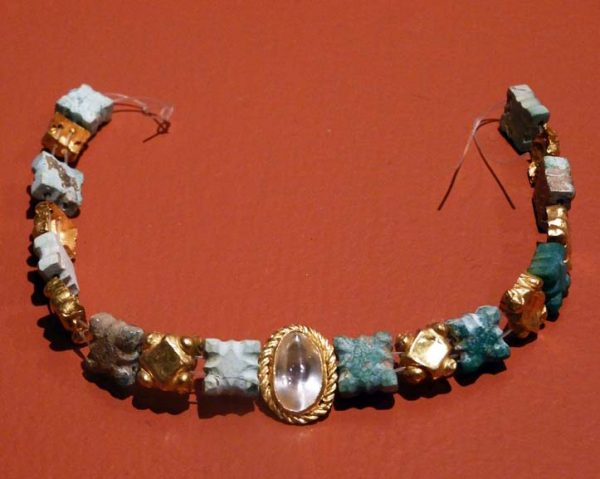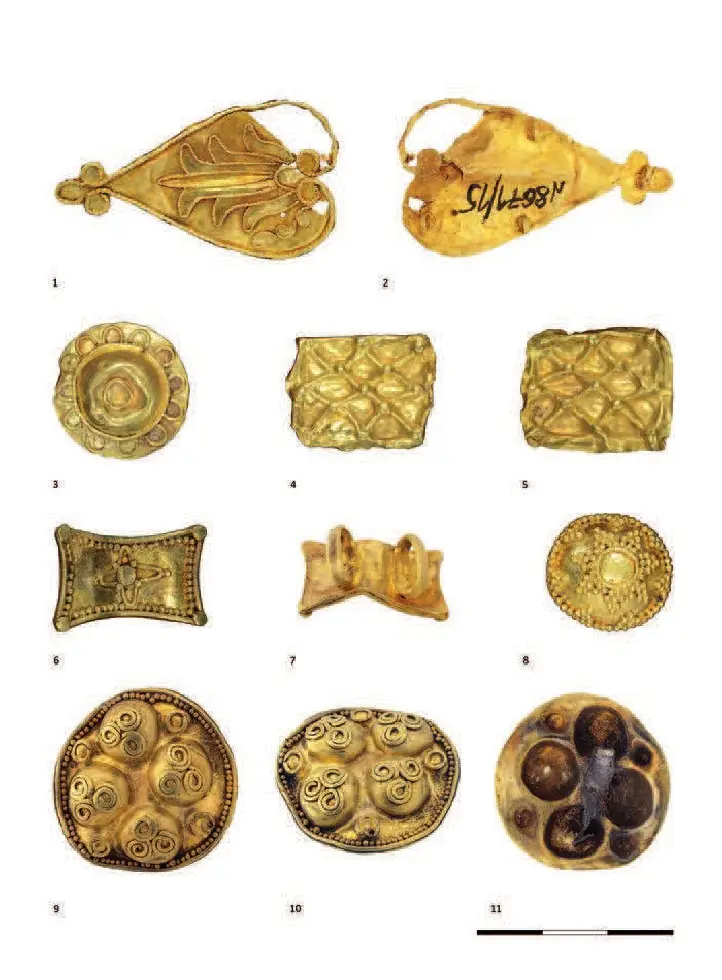What we see in the sculpture like those from Palmyra and Hatra as patterned fabrics or costumes lined with precious stones and pearls, may in fact be the result of the use of sewn plaques made of thin sheet metal. Many such gold ornaments have been preserved at most of the archaeological sites containing burials. The patterns on the garments of the characters from Palmyra and Hatra are mostly geometric. A great example of such ornaments are those found in the sanctuary of the goddess Artemis at Ephesus, Turkey, dated to the 7th-6th century BCE. [see the overview by Andrea M. Pülz below]
About 530 gold appliqués were found in the Artemision at Ephesus, most of them with holes on the edges which indicates their use as garment decorations. [“Investigation of ancient gold objects”]









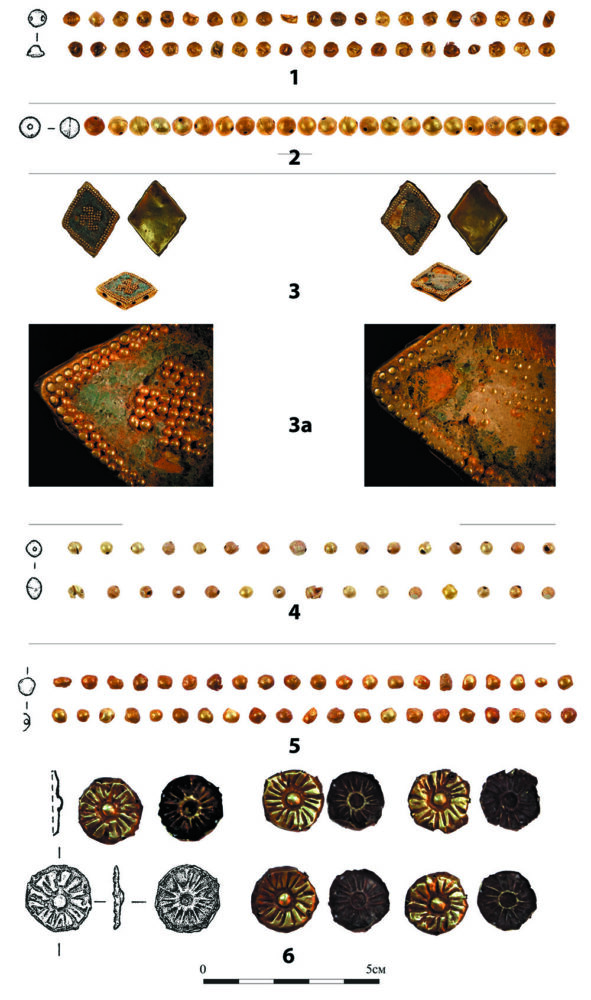
Scythian burial mound Novozavedennoe-III in the Georgievsk district of the Stavropol region, female burial 1 of mound No. 4.
5th-4th century BCE
Анатолий Робертович Канторович [Anatoly Kantorovich] “Могильник Новозаведенное-III как свидетельство пребывания скифов в Центральном Предкавказье в конце V-IV в. до н.э.” http://www.historystudies.msu.ru
Pokazane na zdjęciu złote elementy ozdabiały strój scytyjskiej kobiety: koraliki, naszywki w formie rozet, dwa romboidalne elementy rozdzielające paciorki inkrustowane turkusową emalią, z nalutowanymi granulkami układającymi się w kształt swastyki.
Scythian royal Alexandropol kurgan
Alexandropol kurgan discovered near the village of Petrikovka in the Solonyansky district of the Dnepropetrovsk region in Ukraine is a burial mound of the highest Scythian nobility of the 4th century BCE.
Among the finds were very interesting ornaments with geometric patterns, like the eleven gold stamped rectangular plaques with a motif of four flowers interspersed with acanthus leaves. The plagues are 4.5 x 3.5 cm, every one has large nail holes around the edge.
Their purpose is unclear, they were found in a horse burial. [A. Alekseev, p. 545]


Another five square plaques, made of gilded silver, are decorated with a motif of four-petalled flowers framed with a braided pattern. At the end of one piece there are oval stripes.
Every plaque had eight holes on each plate, and according to A. Alekseev they looks like a part of upholstery.

Ornaments pictured below are made of thin gold sheet, embossed and punctured.





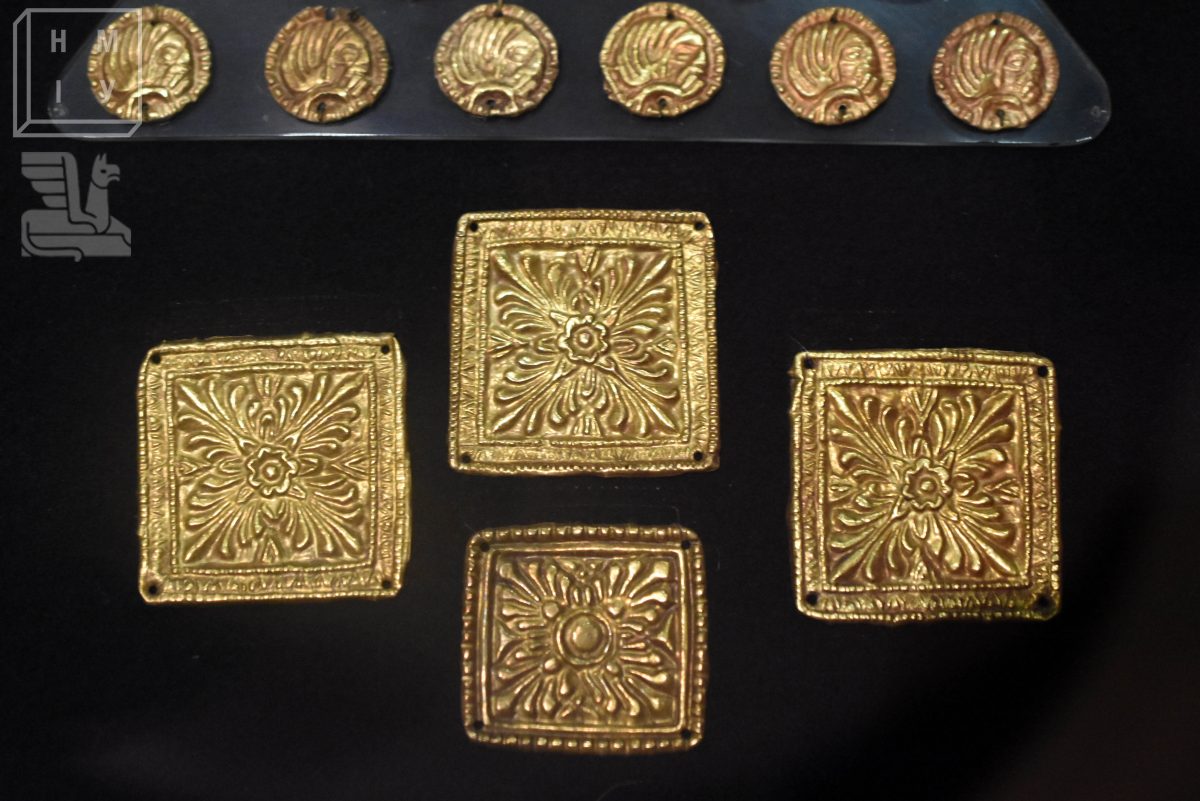
“Lyubov Klochko about the secrets of the Berdyansk mound” https://nmiu.org/novyny/1566-liubov-klochko-pro-taiemnytsi-berdianskoho-kurhanu

https://www.facebook.com & https://uspih.in.ua/
This plaque “was found in a Scythian mound of the 4th century B.C. in the “Nosaki” group near the village Beams of the Vasyliv district of the Zaporizhzhya region. [«Носаки» поблизу с. Балки Василівського району Запорізької області] Excavations of Mound 13 were carried out in 1974 by the Northern Rohachyn Expedition of the Institute of Archeology of the Academy of Sciences of Ukraine under the leadership of Vasyl Bidzili. The burial was completely looted, but among what remained, apart from a few gold appliqué plates, were gilded ceramic beads and multi-colored dull glass beads: blue, yellow, brown. All that remains from the jewelry of women’s clothes”
https://www.wikiwand.com/uk/%D0%9D%D0%BE%D1%81%D0%B0%D0%BA%D0%B8_13
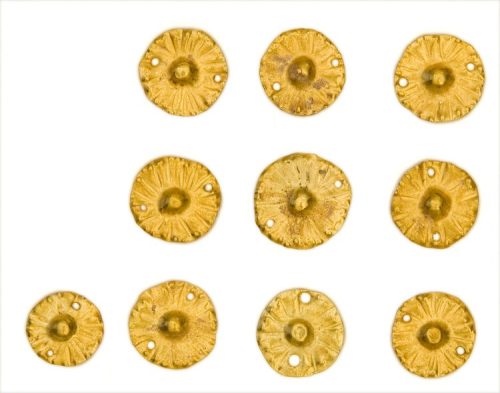
Thin gold pendants, 10 pieces. Second half of the 1st century BCE.
Sonassar (Kashatagh), gold, History Museum of
Armenia, Yerevan 3137 / 1-80
Gold, disc-shaped, thin rosettes are made by
stamping. The holes on both sides were for sewing
onto a garment.



Photo: DPA https://www.badische-zeitung.de
read more >> http://colorsandstones.eu/2022/04/18/late-antiquity-treasure-found-near/
MESOPOTAMIA
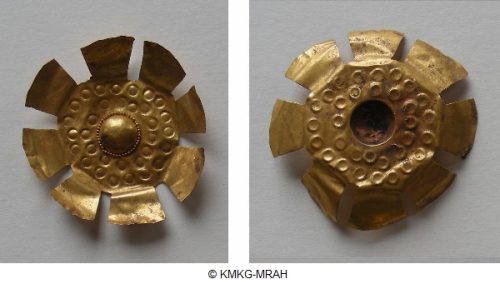
Gold rosettes, sewn ornaments, 1500 – 1001 BCE, Iran, Amlash
Royal Museums of Art and History/Koninklijke Musea voor Kunst en Geschiedenis IR.1301 & IR.1288
“These discoid pendants and rosettes in gold leaf are enhanced with hammered and incised motifs. The rosettes have no identifiable method of attachment, they were perhaps sewn onto pieces of clothing. A number of nearly identical pendants have been discovered at Marlik Tepe in northern Iran.”
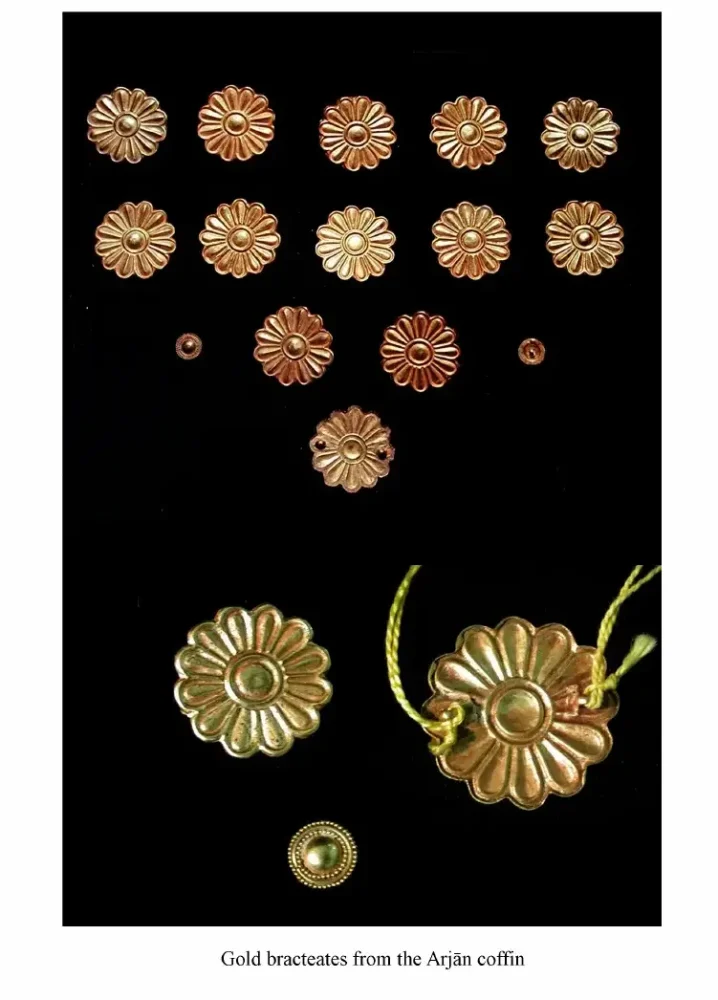
Javier Alvarez-Mon (2010)
Cotton Textiles and Bracteates from Arjan https://www.academia.edu
The Neo-Elamite Arjan tomb is an elite burial found in 1982 near the town of Behbahan in south-western Iran dated to ca. 600-550 BCE.
In the burial several pieces of cotton textiles were found. The piece once adorned with gold embroidered rosettes and the frills measured 66 cm by a minimum of 43 cm. One more piece of textile was adorned with gold ornaments most likely.
SOURCES:
- A.M Pülz, Die Goldappliken aus dem Artemision von Ephesos. Studien zur Typologie, Forum Archaeologiae 36/IX/2005 https://homepage.univie.ac.at
- B. Bühler, Die Goldappliken aus dem Artemision von Ephesos. Studien zur Technologie, Forum Archaeologiae 36/IX/2005
https://homepage.univie.ac.at - Investigation of ancient gold objects from Artemision at Ephesus using portable µ-XRF (2009)
Michael Melcher, Manfred Schreiner, Birgit Bühler, Andrea M. Pülz and Ulrike Muss https://doi.org/10.4000/archeosciences.2172 - https://www.britishmuseum.org/collection/object/G_1907-1201-31
- https://www.britishmuseum.org/collection/object/G_1907-1201-61
- https://www.britishmuseum.org/collection/object/G_1907-1201-62
- https://www.britishmuseum.org/collection/object/G_1907-1201-55
- [Scythian royal Alexandropol kurgan]
Скифский царский Александропольский курган IV в. до н.э. в Нижнем Поднепровье. Киев – Берлин: “Видавець Олег Фiлюк”, 2018 (Серия “Курганы Украины”, т. 6) https://www.academia.edu/41694943/Scythian_royal_Alexandropol_kurgan
А.Ю. Алексеев. Александропольский курган в Эрмитаже [A. Alekseev] - Alexandropol revisited. Excavating a Scythian royal burial / Current World Archaeology Issue 91
Sergei Polin, Marina Daragan https://www.academia.edu - OBJECTS FROM ALEXANDROPOL KURGAN IN THE COLLECTION OF THE ARCHEOLOGICAL MUSEUM OF KHARKIV KARAZIN NATIONAL UNIVERSITY S. A. Zadnikov https://adiu.com.ua/index.php/journal/article/view/21
- A Study on the Scythian Gold Plaques; Kim, Moon-Ja https://koreascience.kr/article/JAKO200231559975657.pdf
- Javier Alvarez-Mon (2010) Cotton Textiles and Bracteates from Arjan https://www.academia.edu
See also the Kul-oba kurhan 4th C BCE https://catalog.shm.ru/entity/OBJECT/5912774?page=2&query=%D0%B7%D0%BE%D0%BB%D0%BE%D1%82%D0%BE%20%D0%9A%D0%B5%D1%80%D1%87%D1%8C&index=183
Cyprus https://www.britishmuseum.org/collection/object/G_1896-0201-24




